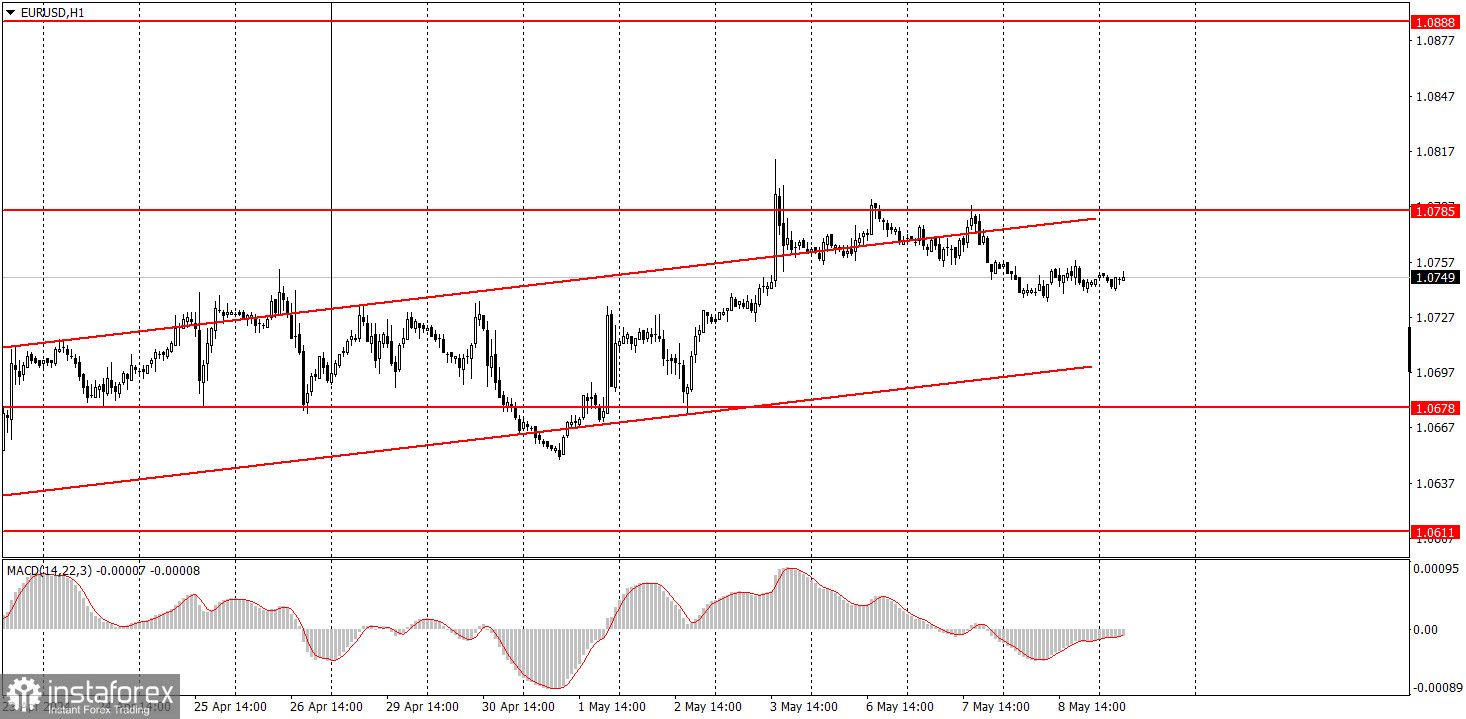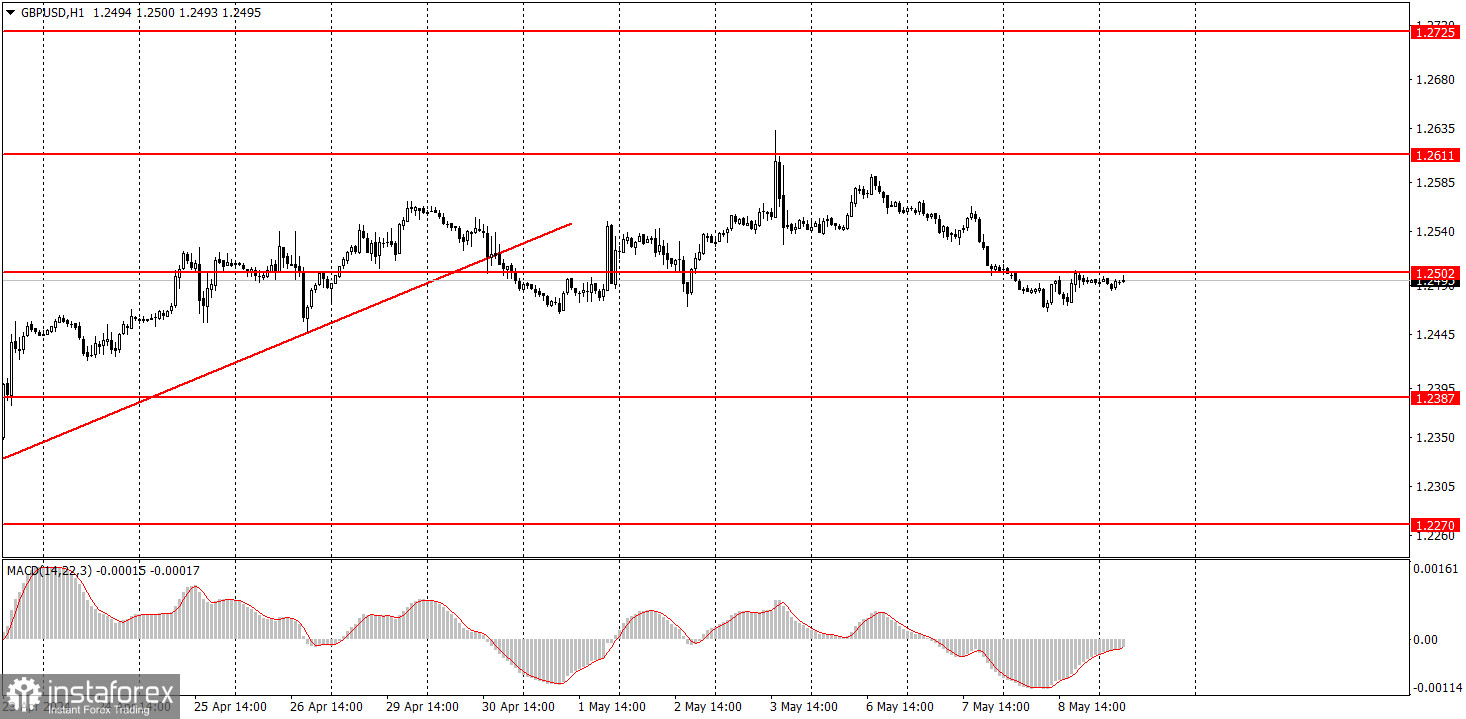Analysis of macroeconomic reports:

There are very few macroeconomic events planned for Thursday. In general, we will only highlight the US report on initial jobless claims. However, this report is of secondary importance, so we don't expect a market reaction. This week, the lineup of important events has been practically barren. At least today, we have the Bank of England meeting and BoE Andrew Bailey's speech, while the market has been obviously quiet during the first three days of the week. At least the pound tried to show some movement on Monday and Tuesday. The euro did no such thing.
Analysis of fundamental events:

Among today's fundamental events, the BoE meeting is clearly the main focus. Expectations vary because it's clear that it's not yet time for the British central bank to ease monetary policy. Therefore, Bailey may announce good inflation rates and hint at future rate cuts. On the other hand, he may adopt a neutral stance, preferring to wait for inflation to drop below 3% before the Bank begins to discuss a rate cut. The same applies to the distribution of votes. Only 1 or 2 members of the monetary committee may vote for a rate cut, which isn't enough to lower the rate. However, the pound's decline, which we've been waiting for a long time, may depend on how many officials support monetary easing.
General conclusion:
Today, the key event will be the BoE meeting. This could push the GBP/USD pair in any direction. While the British pound may influence the euro, it doesn't necessarily happen every time. Therefore, we expect significant movements from the pound in the afternoon, but the euro's case is doubtful.
Basic rules of a trading system:
1) Signal strength is determined by the time taken for its formation (either a bounce or level breach). A shorter formation time indicates a stronger signal.
2) If two or more trades around a certain level are initiated based on false signals, subsequent signals from that level should be disregarded.
3) In a flat market, any currency pair can produce multiple false signals or none at all. In any case, the flat trend is not the best condition for trading.
4) Trading activities are confined between the onset of the European session and mid-way through the U.S. session, after which all open trades should be manually closed.
5) On the 30-minute timeframe, trades based on MACD signals are only advisable amidst substantial volatility and an established trend, confirmed either by a trendline or trend channel.
6) If two levels lie closely together (ranging from 5 to 15 pips apart), they should be considered as a support or resistance zone.
How to read charts:
Support and Resistance price levels can serve as targets when buying or selling. You can place Take Profit levels near them.
Red lines represent channels or trend lines, depicting the current market trend and indicating the preferable trading direction.
The MACD(14,22,3) indicator, encompassing both the histogram and signal line, acts as an auxiliary tool and can also be used as a signal source.
Significant speeches and reports (always noted in the news calendar) can profoundly influence the price dynamics. Hence, trading during their release calls for heightened caution. It may be reasonable to exit the market to prevent abrupt price reversals against the prevailing trend.
Beginners should always remember that not every trade will yield profit. Establishing a clear strategy coupled with sound money management is the cornerstone of sustained trading success.
 English
English 
 Русский
Русский Bahasa Indonesia
Bahasa Indonesia Bahasa Malay
Bahasa Malay ไทย
ไทย Español
Español Deutsch
Deutsch Български
Български Français
Français Tiếng Việt
Tiếng Việt 中文
中文 বাংলা
বাংলা हिन्दी
हिन्दी Čeština
Čeština Українська
Українська Română
Română

